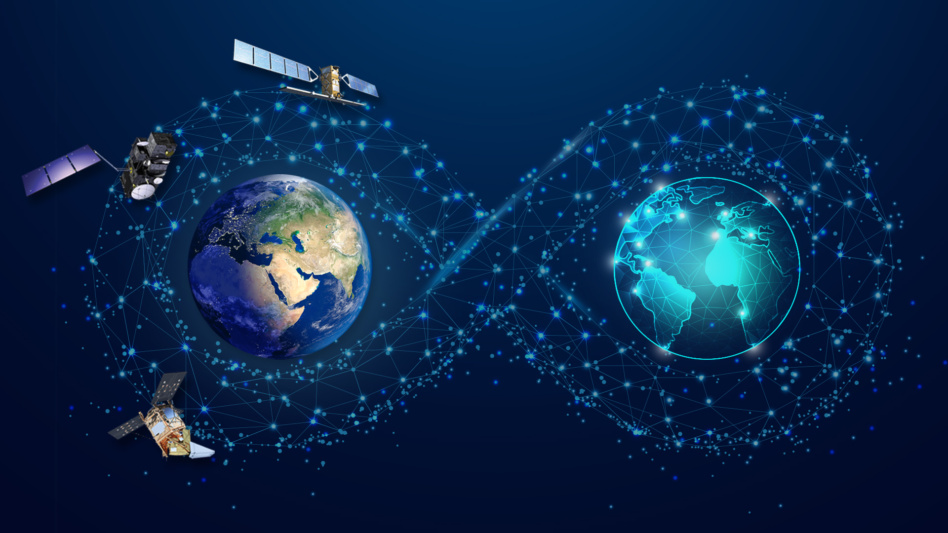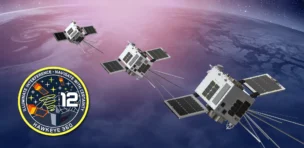After years of AI changing the way people work on Earth, the tech is finally having its moment in the space industry’s spotlight.
Recently, a flurry of new companies have come on the scene or announced new products focused on using AI to increase the efficiency of space operations.
Why now? As Seraphim Managing Director Alexander Holt explained, the number of satellites on orbit has ballooned, collecting too much data to be managed by people alone.
“What you’ve got is a whale load more hardware up in space,” Holt told Payload. “Therefore you have this culmination of a shedload of data, massive improvements in machine learning and AI, and they’re quite natural fits.”
There’s an AI for that: AI’s ability to quickly analyze vast quantities of data has made it applicable to a wide variety of commercial use cases. Of course, there are challenges in applying AI to space, but companies are enthusiastically lining up to overcome them.
For EO companies, AI is helping users parse through the details of images coming back from orbit. Planet, BlackSky, and ICEYE all utilize machine learning and/or AI to identify objects on Earth and track changes over time.
FlyPix AI, a German-based geospatial intelligence company, built its business around the implementation of AI in geospatial imagery. Last month, the company was selected as a geospatial partner for the EU’s DestinE project, with the goal of getting geospatial data into the hands of more people, regardless of their technical background.
“Our goal is to really democratize access to Earth observation analytics. To give a chance to people just to sign up, upload imagery or use our data market imagery [to] build this AI use case,” FlyPix AI’s cofounder and chief data officer Ivan Tankoyeu told Payload.
Neighborhood watch: AI has also been instrumental in helping companies better understand what’s in orbit.
Planetary Systems AI, a US-based startup founded in December, completed a three-month project with the Space Force last week to improve their SDA capabilities. The company aggregated 2.3M open-source records on satellites to help the Space Force better track and defend US and allied assets in orbit.
While Planetary Systems AI envisions a range of use cases for its AI capabilities, the fundamental idea is to bring the space ecosystem into the 21st century.
“The infrastructure in the federal government and all governments in general with space technology is really antiquated. It’s Apollo-era infrastructure,” said CEO Cindy Chin. “We can use machine learning to process massive petabytes of data that have been sitting in siloed and legacy systems.”
AI is even finding its way into space businesses’ terrestrial operations. ManufactureAI, a CA-based startup in the midst of raising a pre-seed investment round, is using large language model applications to speed up the process to design, build, and ship space assets.
A storied history: While there’s been a recent influx of companies bringing AI to space, the tech isn’t new to the space ecosystem. NASA has used AI in a wide variety of projects for years.
- Perseverance: NASA’s Mars rover uses AI to detect and avoid hazards as it traverses over the planet.
- Climate modeling: Applying AI to data from EO and weather satellites, the agency can detect algae blooms, deforestation, and hazardous weather conditions.
- Deep space: Pointing the telescopes outward, the agency uses AI to discover new exoplanets, and conduct deep space research.
- Systems design: NASA also utilizes AI when designing new components. These AI-designs can be created four times faster and are typically more skeletal in appearance compared to their human-designed alternatives, according to NASA’s chief AI officer Dave Salvagnini.
NASA’s viewpoint is that AI will continue to be increasingly important, and the agency is actively working to increase the adoption of systems that improve their missions.“There is an enormous appetite for the potential of AI,” he told Payload in June. “Everyone will in some way, have their workday augmented using some type of an AI technology.




